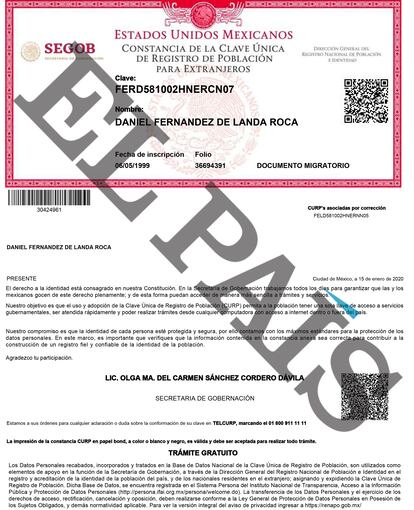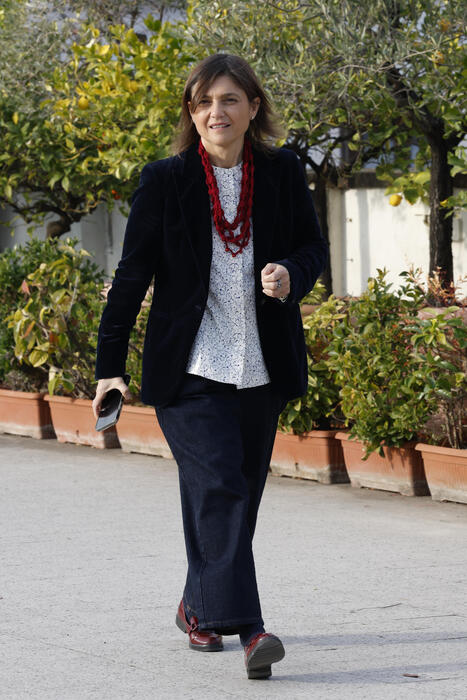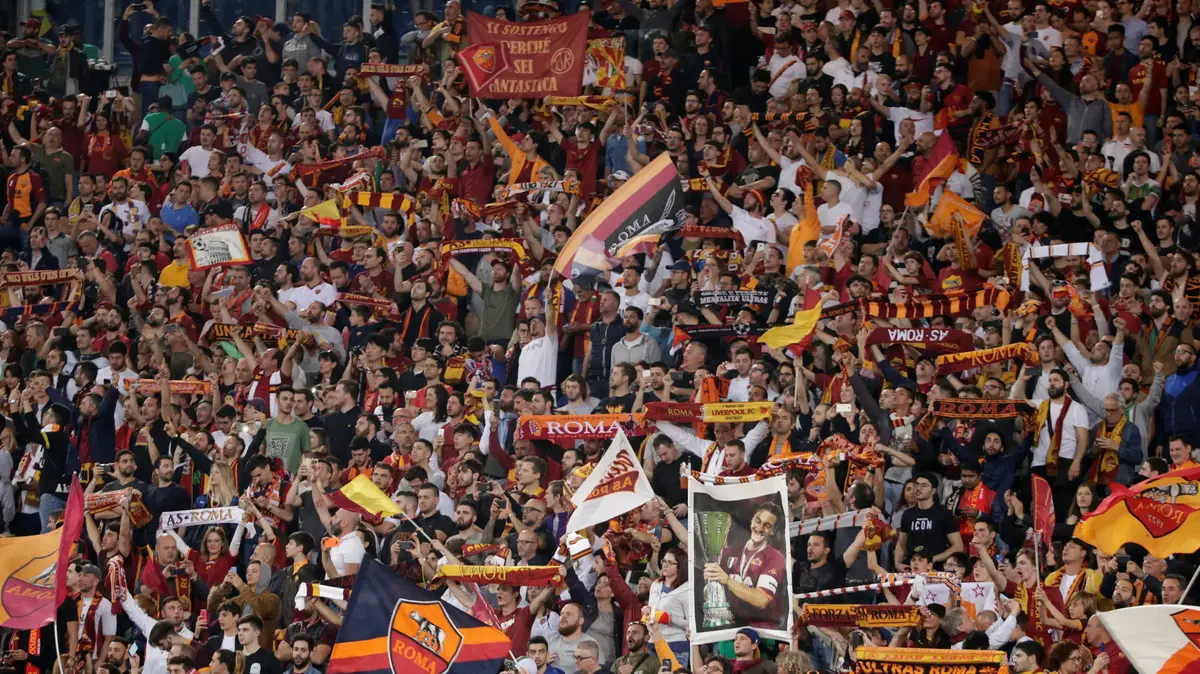Falangists Daniel Fernández de Landa Roca and Íñigo de Guinea Pérez, alleged perpetrators of two of the bloodiest attacks of the Spanish Transition, have been hiding for more than 30 years in Mexico, where they live with total impunity, according to an investigation by EL PAÍS , which reveals his whereabouts for the first time.
Fernández de Landa, 64, is accused of the murder of the Madrid neighborhood leader Arturo Pajuelo Rubio after a demonstration on May Day 1980. The ultra was also part of the fascist commando that five days later perpetrated the assault on the Madrid bar San Bao, where the soldier Juan Carlos García Pérez, 20 years old, died.
Since 1985, Fernández de Landa has been hiding in Mexico City.
Mexico has also welcomed De Guinea, accused of the stabbing that left Joaquín Martínez Mecha, the man who accompanied Pajuelo when he was killed, on the verge of death.
At 60 years old, De Guinea lives with his family in León, a city of 1.5 million inhabitants in the state of Guanajuato.
The two fugitives starred in a movie escape in 1980. The escape allowed them to avoid the bench in Spain, where trial in absentia for serious crimes is prohibited.
And, for more than three decades, they enjoyed a placid anonymous life more than 9,000 kilometers from Madrid while Interpol had them on its list of wanted fugitives.
During this time, the neo-fascists registered flats in their name, created companies, and registered as foreigners with Mexican government agencies.
Fernández de Landa went a step further by obtaining Mexican nationality in 1990, and De Guinea changed his name by changing his native Íñigo to Ignacio, according to the documentation to which this newspaper has had access.
The ultra fugitive Íñigo de Guinea Pérez, in a recent image.
The first conversation between EL PAÍS and De Guinea took place at 5:30 p.m. last Tuesday.
It barely lasts three minutes.
-Inigo of Guinea?
-Yes, it's me.
I am a Spanish journalist.
We prepared a story about Transition events and wanted to talk to you.
-Well, yes, there is no problem, but right now I'm in the car, on the street.
I don't know if it can be later, in a couple of hours, that he calls me.
-We would like to know your opinion on a series of events that occurred in the 1980s in Spain and in which you were involved, you will perfectly remember what it is about...
-Yes Yes of course...
De Guinea calls for a second talk two hours later, but does not answer the calls.
The next day, after insistence, she picks up the phone to unfold an exculpatory string.
-According to justice, he was involved in the murder of Arturo Pajuelo and in the assault on the San Bao bar...
-I had to see in those facts, but not as it appears in the summaries.
Not everything they say is true.
I was not at the trial, I could not defend myself.
-He was not in the trial because he fled and has been looking for and captured for three decades.
-I left because I got a job.
She was 18 years old and scared.
Many ended up in jail without having anything to do with it.
It was taking too much risk.
What if I couldn't prove my innocence?
-Joaquín Martínez, the survivor of the attack against Pajuelo, recognized him as the author of his stabbing.
-They framed me, but I wasn't there.
I didn't harm anyone.
In the case of the San Bao bar, I was in the surroundings, but I did not get to enter.
-Why has your name been changed to Ignacio?
-They told me that Íñigo did not exist in the Mexican saints.
The ultra says goodbye with a slow voice.
She assures that she has lost contact with Fernández de Landa and acknowledges that she worked with him two decades ago in a Mexican plastics company.
And plastic is precisely the common thread that marks the secret life in Mexico of De Guinea and Fernández de Landa.
To reconstruct the hidden trail of the latter, you have to travel to Naucalpan de Juárez (State of Mexico).
The year is 1990. Fernández de Landa is 32 years old and directs the firm Distribuidora e Importadora los Delfines SA de CV.
The company has 11 employees, according to the commercial register.
The neo-fascist embarks on it with a deceased Mexican restaurateur.
The project lasts until 1999. Today, a workshop occupies this dilapidated block shielded by a metal gate from which the noise of heavy machinery flows.
Immigration document in Mexico of ultra fugitive Daniel Fernández de Landa Roca.
The next scenario leads to San Juan de Aragón, an anarchic swarm of low houses embedded in the municipality of Gustavo A. Madero where finding an address becomes an odyssey.
The fugitive lands in this area of 1.1 million people after marrying the daughter of a Mexican industrialist who runs a thread factory and banquet complex, Salones Cristal.
It's still the nineties.
Fernández de Landa presents himself to his new family as a discreet and educated man.
An exemplary person who soon transforms his father-in-law's textile business into a plastics factory.
His company is called Plásticos Landa and since 2004 it has been operating the brand of utensils and containers for the Plastmade house, according to the commercial registry.
The business works.
It employs a dozen workers.
And it allows the ultra and his Mexican wife to navigate a comfortable life that includes small pleasures like driving flashy cars.
Only the memory of Fernández de Landa remains today in the San Juan de Aragón neighborhood.
The building where the couple lived with his daughter, built on a plot of 4,000 meters, has been conquered by the parking lot of an imposing religious temple with white walls, the Church of Jesus Christ of the Saints of the Last Days.
“They sold the site where they had the factory and their house to the temple;
we still resist”, recalls Mari Paz, who was a neighbor of the couple for two decades.
"He never told us anything about his past in Spain," adds from a window this sixty-year-old who defines the ultra as an educated man.
Fernández de Landa has never abandoned the plastics sector.
Through firms such as Hidro Raf SA de CV, a company specializing in the manufacture of packages and containers of this material, the man accused of taking the lives of two people in the Transition has lavished himself in international forums.
His company participated in 2012 in the Mexican city of Guadalajara in the Antad retail fair.
The trick of nationality
The ultra went through this anonymous life without raising suspicions thanks to his Mexican nationality.
A safe-conduct that he obtained in 1990, when Interpol was still persecuting him.
How could this procedure be done, which today requires a criminal record certificate?
“In Mexico everything is possible with money.
And in those years, more”, admits a former public prosecutor's office in this country, where more than a hundred ETA members took refuge in 1995.
Falangist Daniel Fernández de Landa Roca, the first from the left, wearing a blue shirt with the emblem of the yoke and arrows, in a file image.
Spanish justice has had Fernández de Landa on its radar since he left Spain.
The Central Court number 4 of the National Court, which claimed him until 2011 for intentional homicide, maintained a second arrest warrant against the fugitive until February 2018.
During his escape, the accused of the deaths of Pajuelo and García has revealed himself as a master of confusion.
It is 11 in the morning in the Valle Escondido urbanization.
The complex is a fortress of millionaires upholstered by golf courses and movie security measures where the wealthy Mexican fortunes coexist.
And where nobody knows Fernández de Landa, despite the fact that the ultra set an address for bureaucratic procedures in one of his single-family homes.
"We never heard of that man," says a service employee of the fugitive's alleged home.
The gardener of the house, valued at two million euros, nods silently.
This newspaper has not been able to obtain Fernández de Landa's version.
The Guanajuato Refuge
Five hours by car from Mexico City, one of the most violent states in the country unfolds, Guanajuato (2,516 homicides in 2021).
The Falangist Íñigo de Guinea Pérez chooses the city of León to put down roots, start a family and escape from the clutches of the Spanish investigators who were looking for him for stabbing Joaquín Martínez, a friend of Pajuelo.
De Guinea registers a 130-meter single-family home with a garden in León on Chancellor Street in Colonia Real Providencia, according to the property registry.
He does it under a false name.
He changes Íñigo for Ignacio.
The house goes unnoticed in an urbanization of irregular terraced houses where the neighbors have created a citizen patrol of informants.
The militia of order tries to dissuade intruders and thwart the more than frequent armed robberies and robberies.
“Neighborhood Watch”, reads a sign next to a police station.
“Are you looking for something?” asks a sixty-year-old on a bicycle dedicated to warning neighbors of the presence of strangers.
In Real Providencia they are unaware that two Spanish courts have claimed their neighbor De Guinea for intentional homicide for more than 30 years.
The search and arrest warrants against this man with a strong Mexican accent remained active until 2006 and 2011.
In León, De Guinea created a plastic products company in 2000, when he was still wanted by Interpol, according to the commercial registry.
His business operated in a large industrial warehouse 20 kilometers from his home.
Today, he rents an apartment in Residencial Dorado – a quiet community next to the Vía Alta shopping center – and sells products online.
The ultra does not hide his obsession with weapons - he likes shooting clubs - and keeps his convictions intact, according to a profile on social networks with the modified last name.
In it, he remains in contact with former militants of the Falange Española de las JONS and former members of the Frente de la Juventud, a violent split from Fuerza Nueva whose militants perpetrated murders, assaults, and kidnappings.
the day of the tragedy
To understand Fernández de Landa and De Guinea's flight to Mexico, one must immerse oneself in the most violent side of the Transition.
The year is 1980. Arturo Pajuelo is 33 years old and the second of eight brothers.
He works as a draftsman in an aeronautical company in Getafe.
And he combines his passions - athletics, climbing and capeas - with the neighborhood association Guetaria de Orcasitas (Madrid).
His neighborhood is a conglomerate erected in the fifties by construction workers and Telefónica workers.
Pajuelo has the makings of a leader in a territory where the Andalusian accent of immigration fleeing poverty resonates.
The young man battles to repair a block of flats threatened by cracks.
It is a quarter to two on May 1, 1980. Pajuelo and his friend Joaquín Martínez leave the Labor Day demonstration, called by UGT and CC OO.
They are walking down Tarragona street when two individuals silently assault them.
They are presumably Fernández de Landa and De Guinea, militants of the Spanish Falange and the JONS.
The first stabs Pajuelo nine times in the liver and lungs.
His colleague receives two from De Guinea, according to Martínez.
A taxi driver picks up the neighborhood leader in the middle of a pool of blood.
He transfers him to the October 12 Hospital.
Martínez is helped by some tunos, as he recalls.
The ultra fugitive Íñigo de Guinea Pérez, in an image with Falangist attire, in his youth.
Pajuelo dies.
Two operations and a 20-liter transfusion donated by the residents of Orcasitas are useless in the vital battle.
The stabs were accurate.
Martinez survives.
“I was stabbed twice in the back.
One affected my kidney and another affected my coccyx.
I was admitted to the ICU for 21 days, serious.
I think they followed us after the demonstration ended.
They took us at random ”, he remembers today, at 67 years old, this survivor.
From the hospital bed, Martínez gave the guidelines to the police to make the robot portraits of Daniel and Íñigo.
Martínez identified the aggressor in the photographic archive of
Diario 16
.
He did not trust the police.
“The one who stabbed Pajuelo was a guy with a beard and a woman's face, Daniel.
I saw it at 98%.
And, if they bring him here, I would confirm it 100% ″, adds this man who received facial recognition training during his time as a customs employee and who is disabled as a result of being stabbed.
Pajuelo's crime shocks society.
More than 20,000 people attend the funeral in the Carabanchel Cemetery and 40,000 demonstrate and participate in a strike, according to the chronicles.
Fascist pack in a bar
Five days after the assassination of the neighborhood leader, a militia of about twenty Falangists breaks into the San Bao bar on Madrid's Calle de Arturo Soria with chains, knives and pistols.
"Don't move, we're going to kill you.
Long live Christ the King”, warns the fascist pack.
It is the response of the ultras to a tribute march to Pajuelo that has just ended in the area.
Those summoned have requested the banning of Fuerza Nueva, the formation led by the fiery notary Blas Piñar.
One of the clients of the San Bao, Juan Carlos García Pérez, a 20-year-old soldier, dies in the brawl after being shot twice in the back.
Three other young people are injured.
The National Court prosecuted in 1983 for the assault on the San Bao a dozen ultras, including Fernández de Landa as the author of the fatal shot, and De Guinea, who already accumulated in his criminal record the alleged stabbing of Martínez and an arrest for his participation in the shooting death of the resident of Arganda del Rey (Madrid) José Prudencio García, 44 years old.
Fernández de Landa fled Spain in 1980 after asking the police officers who were going to detain him for a few minutes to take off his waiter's jacket at the El Escorial bar where he worked.
The ultra had been expelled from Falange Española and de las Jons a year earlier for his "revolutionary and aggressive" behavior, according to the summary of
the Pajuelo case
.
Arturo Pajuelo, neighborhood leader of the Orcasitas Neighborhood Association of Madrid, in a file image.
His brother Jesús was arrested in El Escorial shortly after being mistaken for a GRAPO militant when he was carrying a nine-millimeter Astra pistol and a 32 FN revolver in a shoe box. The weapons were used in the assault on the San Bao, according to the researchers.
The Supreme Court sentenced Jesús Fernández de Landa, brother of Daniel, and Juan Domingo Martínez Lorenzo, alias Perón
, to 32 years in prison for this crime in 1985
for two separate crimes of consummated murder and frustrated murder.
After tripling the sentences imposed by the National High Court, the high court considered his key contributions to the crime, but specified that they did not execute the death of Juan Carlos García, whose authorship was attributed to the fugitive Daniel Fernández de Landa.
For four decades, the latter's whereabouts have been a mystery.
Interpol initially believed that he spent his early years as a fugitive in a castle in France from Italian neo-fascist Stefano Delle Chiaie, head of the Avanguardia Nazionale.
And that, later, he hid in Switzerland.
Felipe Pajuelo, 68, the victim's brother, assures that his relative was not a member of any party or union.
“The culprits fled.
We are left without Arturo and without justice.
Forty years later, no one has paid for his murder, ”he laments.
In the Madrid neighborhood of Orcasitas, a sculpture in the shape of a dove raised with a popular collection recalls that thirty-year-old with Afro hair who claimed houses for the most humble families before the power.
A senior center is named after him.
"Arturo Pajuelo was a born leader, a young man who did a lot for the town," defends one of the residents.
investigacion@elpais.es
Exclusive content for subscribers
read without limits
subscribe
I'm already a subscriber


/cloudfront-eu-central-1.images.arcpublishing.com/prisa/KRD2LI5IMVFG3IDDWM2ZAAPS2I.jpeg)












